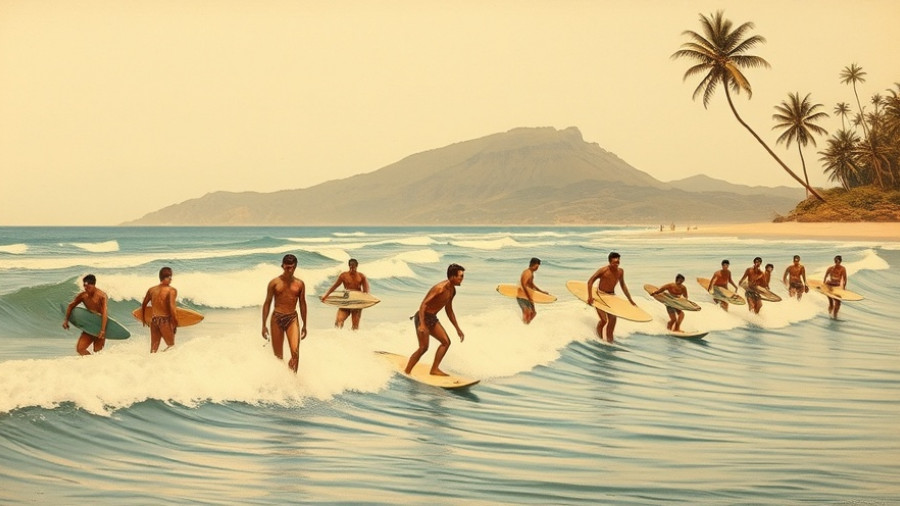
The Ancient Waves: The Rich History of Surfing
Surfing is not merely a recreational sport; it is a vibrant tapestry woven from the threads of ancient cultures, love for the ocean, and a shared social experience. While most people associate surfing with the beautiful beaches of Hawaii, its roots extend deep into the oceanic traditions of Polynesia and even towards ancient China.
Surfing in Ancient Polynesia: Masters of the Waves
Imagine the breathtaking sight of early Polynesians gliding over the waves on handcrafted wooden boards, using their knowledge of the sea to navigate the vast Pacific Ocean. This art, referred to as “wave sliding,” emerged in the geographical triangle that encompasses the islands of Hawaii, Tahiti, and New Zealand. Archaeological evidence indicates that these ancient navigators developed a profound connection to the ocean, making surfing a natural extension of their maritime culture.
Unlike the crowded surf spots of today, early Polynesian surfing was a communal activity. Everyone, regardless of gender or social standing, had access to the waves, fostering a deep sense of community and inclusion. Surfing became a celebration of life, with dedicated priests known as kahuna overseeing rituals that blessed surfboards before sessions. These boards were not just tools; they were spiritual items crafted with care and respect for nature's gifts.
Hawaii: The Heart of Surf Culture
As Polynesians settled in Hawaii between 940 and 1200 CE, they brought with them their surfing traditions, which evolved into something uniquely Hawaiian. The sport reached its zenith during the reign of the ali’i, the local royalty. Certain surf spots became so revered that they were exclusively reserved for the elite, creating an intriguing blend of inclusivity and exclusivity that defined Hawaiian surf culture.
One notable historical moment was captured in 1769 by Lieutenant James King, who documented the skillful Polynesian surfers on his voyage with Captain James Cook. His description immortalized the joy and thrill conveyed by surfing, marking a pivotal point in its history. Unfortunately, the arrival of Europeans would soon threaten the very existence of these beautiful traditions.
Ancient Chinese Surfing: A Surprising Revelation
While the Pacific islands are often credited as the birthplace of surfing, Nik Zanella’s research, presented in his book Children of the Tide, suggests that this art form may also find roots in ancient China. His examination of historical artifacts indicates that as far back as the 1200s, individuals were riding waves, celebrating their maritime culture in a manner strikingly similar to their Polynesian counterparts.
Zanella’s archeological discoveries, such as a bas relief showcasing figures surfing on mythological creatures, reveals an enduring love for water sports. This discovery expands the narrative of surfing, illustrating that wave riding is a global phenomenon that links diverse cultures through shared passions.
The Legacy of Surfing: A Culture That Evolves
Today, as surfing continues to evolve, its ancient roots remain a source of inspiration. The sport has transcended generations, embodying values of adventure, community, and sustainability that resonate deeply with enthusiasts. This rich history underscores a fundamental truth: surfing is more than just a sport; it is a celebration of life and freedom.
Why Understanding Surfing's History Matters
For surfers, knowing the historical context behind their favorite activity can deepen their appreciation for the sport. It connects them with the ancestors who rode the same waves long before modern surfboards and competitions existed. This legacy fosters not just a sense of pride but also a responsibility to protect the oceanic environments that have nurtured these traditions.
In conclusion, whether you are catching your first wave or have decades of experience, understanding the origins of surfing enriches the experience. It reminds us that we are all part of the ongoing story of this incredible pursuit. So, next time you paddle out, take a moment to reflect on the ancient navigators whose spirits guide your ride.
If you feel inspired to embrace these traditions in your own life, consider joining a local surfing community or participating in ocean conservation efforts. By doing so, you honor the legacy of those who came before us and contribute to the future of this beloved sport.
 Add Row
Add Row  Add
Add 




Write A Comment